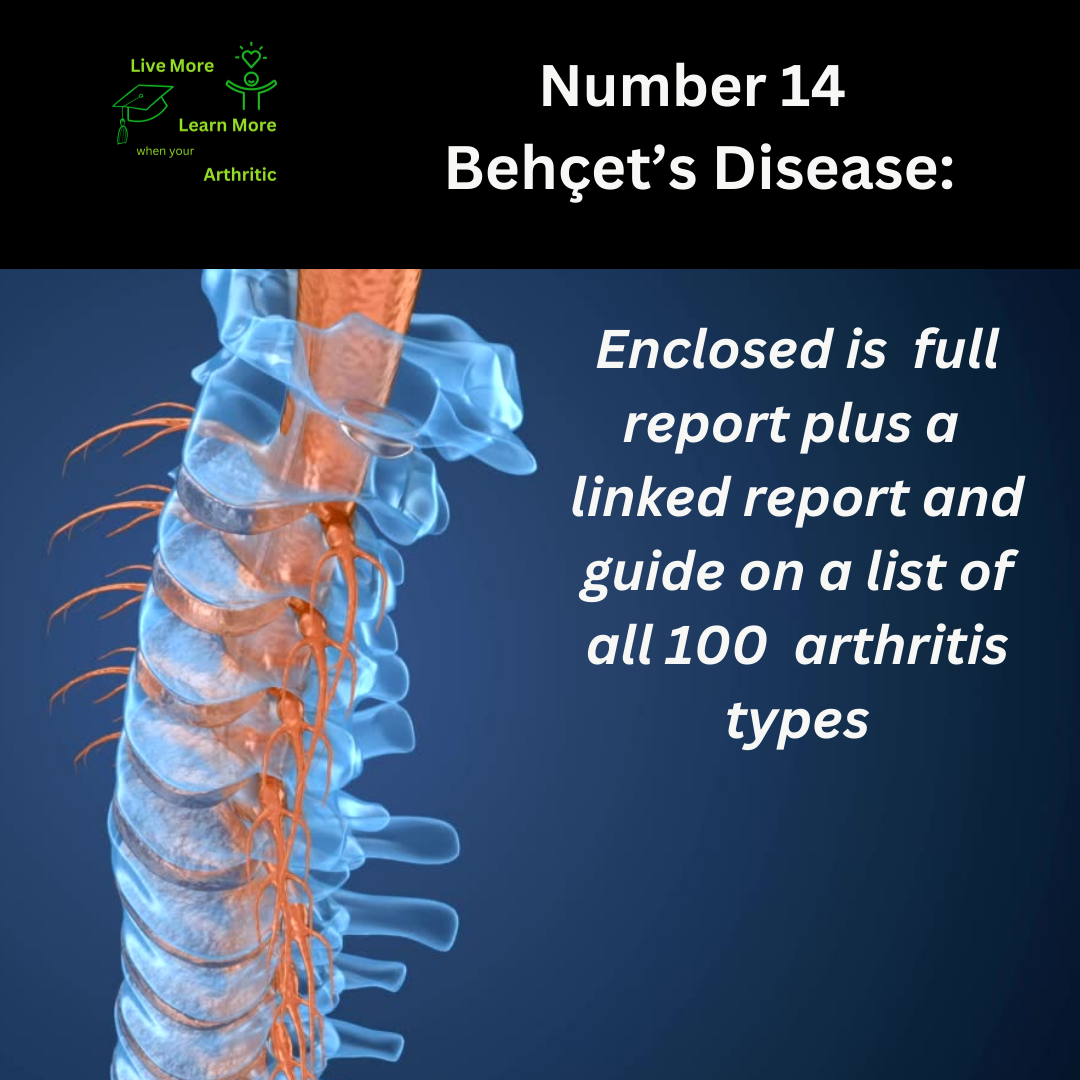
Behçet’s Disease: Number 14 on the list of 100 types of Arthritis
Navigating Behçet’s Disease: Understanding, Coping, and Living Proactively
Imagine waking up one morning with painful sores in your mouth, swelling in your joints, and unpredictable flare-ups that disrupt your daily life. This is the reality for those living with Behçet’s Disease, a rare but challenging condition that demands understanding and proactive management.
 Description of Behçet’s Disease
Description of Behçet’s Disease
Behçet’s Disease, named after the Turkish dermatologist Hulusi Behçet who first described it in 1937, is a chronic inflammatory disorder that can affect various parts of the body. It is characterized by recurrent oral and genital ulcers, skin lesions, and inflammation in the eyes. Additionally, joints, blood vessels, and the central nervous system can be involved.
Causes and Triggers
The exact cause of Behçet’s Disease remains unknown, but it is believed to involve an abnormal response of the immune system. Genetic factors likely play a role, and certain environmental triggers such as infections or stress can lead to flare-ups.
Symptoms and Challenges
The symptoms of Behçet’s Disease can vary widely from person to person and may include mouth and genital ulcers, skin lesions, joint pain and swelling (resembling arthritis), inflammation of the eyes (uveitis), and potentially more serious complications affecting the blood vessels or nervous system.
Age of Onset and Prognosis
Behçet’s Disease often first appears in young adults, typically between the ages of 20 and 40, although it can occur at any age. The course of the disease varies greatly, with some experiencing periods of remission and others facing more persistent symptoms. It is not generally considered a form of arthritis, though joint inflammation is common.
 Quality of Life and Proactive Management
Quality of Life and Proactive Management
Despite the challenges posed by Behçet’s Disease, a proactive approach can significantly improve quality of life. This includes working closely with healthcare providers to manage symptoms, identifying and avoiding triggers, and adopting lifestyle changes such as stress reduction, maintaining a healthy diet, and getting regular exercise.
Complications and Holistic Approaches
Possible complications of Behçet’s Disease include severe eye problems leading to vision loss, blood clots, and inflammation affecting the brain and spinal cord. While medication is often necessary to manage symptoms and prevent complications, some individuals find benefit from complementary therapies such as acupuncture, dietary modifications, and mindfulness practices.
In summary, although living with Behçet’s Disease presents unique challenges, it is possible to achieve a fulfilling life with a proactive and holistic approach. By understanding the condition, managing symptoms effectively, and embracing lifestyle modifications, individuals can optimize their well-being and navigate this complex disease with resilience and hope.